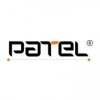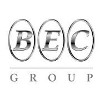Filter interviews by
Ilensys Technologies Interview Questions and Answers
20 Interview questions
Passive components do not require an external power source to operate, while active components do require an external power source.
Passive components include resistors, capacitors, inductors, and transformers.
Active components include transistors, diodes, integrated circuits, and operational amplifiers.
Passive components do not amplify or control the flow of electrical current, while active components do.
Passive c...
Designing a wrench involves determining the size, shape, material, and functionality based on the intended use.
Identify the purpose of the wrench (e.g. for automotive, plumbing, or construction)
Determine the appropriate size and shape of the wrench based on the target fasteners
Select the material for the wrench based on strength and durability requirements
Consider additional features such as adjustable jaws or erg...
Stress-strain diagram shows the relationship between stress (force applied) and strain (resulting deformation) in a material.
Stress is the force applied to a material, while strain is the resulting deformation.
The diagram typically shows a linear elastic region, followed by a yield point, plastic deformation, and ultimately failure.
Materials can exhibit different behaviors on the diagram, such as brittle, ductile,...
Copper has higher thermal conductivity than steel.
Copper has a thermal conductivity of around 400 W/mK, while steel typically has a thermal conductivity of around 50 W/mK.
This means that copper is a much better conductor of heat compared to steel.
Copper is commonly used in heat exchangers and electrical wiring due to its high thermal conductivity.
Steel, on the other hand, is used in applications where strength and...
Bending stress is a type of stress that occurs when a material is subjected to bending.
Bending stress is calculated using the formula: σ = M*c/I, where σ is the bending stress, M is the bending moment, c is the distance from the neutral axis to the outermost fiber, and I is the moment of inertia.
Bending stress is commonly seen in beams, bridges, and other structures subjected to bending loads.
The formula for bendi...
Subcooling and superheating are processes in which a substance is cooled or heated beyond its saturation point, respectively.
Subcooling is the process of cooling a liquid below its saturation temperature without changing its phase.
Superheating is the process of heating a vapor above its saturation temperature without changing its phase.
Subcooling helps in increasing the efficiency of refrigeration systems by ensur...
A chiller is a machine that removes heat from a liquid via a vapor-compression or absorption refrigeration cycle.
Chillers are commonly used in air conditioning systems to cool buildings or industrial processes.
They work by transferring heat from the liquid being chilled to a refrigerant, which then flows through a compressor and condenser to release the heat.
The chilled liquid is then circulated through the system...
Saturation temperature of refrigerant is the temperature at which the refrigerant changes state from liquid to vapor at a given pressure.
Saturation temperature is specific to each refrigerant and pressure level.
It is an important parameter in the design and operation of refrigeration systems.
For example, the saturation temperature of R-134a at 1 atm pressure is -26.1 degrees Celsius.
VARS stands for Variable Air Volume Reheat System, while VCRS stands for Variable Chilled Water Reheat System.
VARS controls the air flow rate and temperature to maintain comfort in a space, while VCRS controls the chilled water flow rate and temperature.
VARS is commonly used in HVAC systems for commercial buildings, while VCRS is used in systems where precise temperature control is required.
VARS can be more energy...
To prevent plastic defects, design engineers use methods such as mold flow analysis, material selection, gate design optimization, and part geometry considerations.
Perform mold flow analysis to identify potential issues before production.
Select the appropriate plastic material based on the requirements of the part.
Optimize gate design to ensure proper filling and packing of the mold.
Consider part geometry to minim...
Ilensys Technologies Interview Experiences
26 interviews found
(1 Question)
- Q1. Difference between passive component and active component
- Ans.
Passive components do not require an external power source to operate, while active components do require an external power source.
Passive components include resistors, capacitors, inductors, and transformers.
Active components include transistors, diodes, integrated circuits, and operational amplifiers.
Passive components do not amplify or control the flow of electrical current, while active components do.
Passive compon...
- Q1. Tell about yourself
- Q2. Technical questions
I applied via Naukri.com and was interviewed in Sep 2023. There were 3 interview rounds.

(5 Questions)
- Q1. Why are use draft angle in plastic?
- Q2. What is shrinkage in plastic?
- Q3. How to prevent plastic defects, which design consideration method are used?
- Ans.
To prevent plastic defects, design engineers use methods such as mold flow analysis, material selection, gate design optimization, and part geometry considerations.
Perform mold flow analysis to identify potential issues before production.
Select the appropriate plastic material based on the requirements of the part.
Optimize gate design to ensure proper filling and packing of the mold.
Consider part geometry to minimize s...
- Q4. What is design library in solid Works?
- Ans.
Design library in SolidWorks is a feature that allows users to store and reuse commonly used parts, features, and assemblies.
Design library provides easy access to standard components like screws, nuts, bolts, etc.
Users can drag and drop items from the design library directly into their designs.
It helps in saving time by reusing pre-designed components instead of creating them from scratch.
Design library can be customi...
- Q5. Joining of 2 sheet metal process?
- Ans.
The joining of 2 sheet metal processes can be achieved through methods like welding, riveting, adhesive bonding, or clinching.
Welding: involves melting the edges of the two sheet metals and fusing them together.
Riveting: involves using metal fasteners to join the two sheet metals together.
Adhesive bonding: involves using a strong adhesive to bond the two sheet metals together.
Clinching: involves deforming the edges of ...
(3 Questions)
- Q1. Plastic defects?
- Ans.
Plastic defects refer to imperfections in plastic materials that can affect their performance and aesthetics.
Surface defects: Scratches or blemishes on the surface can affect appearance and performance.
Dimensional inaccuracies: Parts may not meet specified dimensions, leading to assembly issues.
Bubbles or voids: Air pockets can weaken the material and affect structural integrity.
Color inconsistencies: Variations in col...
- Q2. Which method are used to plastic manufacturing?
- Q3. Plastic design consideration?
- Ans.
Plastic design consideration involves material selection, part geometry, manufacturability, and environmental impact.
Material selection based on properties like strength, flexibility, and temperature resistance.
Consideration of part geometry for moldability, assembly, and functionality.
Ensuring manufacturability by designing for injection molding, extrusion, or other processes.
Addressing environmental impact by choosin...
Interview Preparation Tips
- Solid Works
- New Product Development
I applied via Walk-in and was interviewed in Apr 2024. There were 3 interview rounds.
It is all about Core questions
Regarding current affairs
(2 Questions)
- Q1. Static load vs dynamic load
- Ans.
Static load is a constant force acting on a structure, while dynamic load is a varying force that changes with time.
Static load remains constant over time, while dynamic load fluctuates.
Examples of static load include the weight of a building or a bridge, while examples of dynamic load include wind or earthquake forces.
Static load is easier to predict and design for, while dynamic load requires more complex analysis an...
- Q2. Dynamic load vs static load
- Ans.
Dynamic load is a moving or changing force applied to a structure, while static load is a stationary force.
Dynamic load is a force that changes or moves over time, such as a moving vehicle on a bridge.
Static load is a constant force applied to a structure, like the weight of a building on its foundation.
Dynamic loads can cause vibrations and fatigue in structures, while static loads typically do not.
Examples of dynamic...
Interview Preparation Tips
(2 Questions)
- Q1. Define k-factor
- Q2. Basics of gd&t
(2 Questions)
- Q1. Difference between stress and pressure
- Ans. Stress is a state of body under loading conditions. whereas, pressure is a external fluid force acting on an area.
- Q2. What is mean by Root cause analysis?
- Ans.
Root cause analysis is a systematic process of identifying the underlying cause of a problem or issue.
Root cause analysis helps in understanding the fundamental reason behind a problem.
It involves investigating the symptoms, identifying potential causes, and determining the primary cause.
By addressing the root cause, it is possible to prevent the problem from recurring.
Root cause analysis techniques include 5 Whys, Fis...
I applied via LinkedIn and was interviewed in Jul 2023. There were 2 interview rounds.

(1 Question)
- Q1. Calculate the Voltage in a transistor guess the circuit like these This will be written test 5 questions only on Electronics Subjects no aptitude or reasoning
- Ans. Need to be good at circuits
Interview Preparation Tips
They will say the about bond and training period before the interview only if there is any

(1 Question)
- Q1. Formal screening
(1 Question)
- Q1. Related to technical
(1 Question)
- Q1. Related to technical wit manager
(1 Question)
- Q1. Related to technical with director

(1 Question)
- Q1. About electric circuits
(1 Question)
- Q1. Tell about yourself
I applied via Walk-in and was interviewed in Jan 2023. There was 1 interview round.
(2 Questions)
- Q1. Test Core based easy question Prepare well electronics subjects About rectifier and opamp About nodal analysis
- Q2. About Kcl and kvl and mesh
Interview Preparation Tips
Top trending discussions






Ilensys Technologies Interview FAQs
Some of the top questions asked at the Ilensys Technologies interview -
The duration of Ilensys Technologies interview process can vary, but typically it takes about less than 2 weeks to complete.
Tell us how to improve this page.
Ilensys Technologies Interviews By Designations
- Ilensys Technologies Design Engineer Interview Questions
- Ilensys Technologies Component Engineer Interview Questions
- Ilensys Technologies Electronics Engineer Interview Questions
- Ilensys Technologies Intern Interview Questions
- Ilensys Technologies Mechanical Engg. Design Interview Questions
- Ilensys Technologies Hardware Design Engineer Interview Questions
- Ilensys Technologies Embedded Software Developer Interview Questions
- Ilensys Technologies Associate Consultant Interview Questions
- Show more
Interview Questions for Popular Designations
Overall Interview Experience Rating
based on 21 interview experiences
Difficulty level
Duration
Interview Questions from Similar Companies
Ilensys Technologies Reviews and Ratings
based on 151 reviews
Rating in categories
|
Design Engineer
75
salaries
| ₹3.4 L/yr - ₹8 L/yr |
|
Component Engineer
43
salaries
| ₹2.5 L/yr - ₹6 L/yr |
|
Junior Design Engineer
34
salaries
| ₹2.9 L/yr - ₹4.9 L/yr |
|
Design Engineer II
24
salaries
| ₹4 L/yr - ₹8.5 L/yr |
|
Design Engineer 1
23
salaries
| ₹4.5 L/yr - ₹7 L/yr |

Patel Infrastructure

CTS Consulting & Technical Support

J K Fenner

Saudi Binladin Group
- Home >
- Interviews >
- Ilensys Technologies Interview Questions













